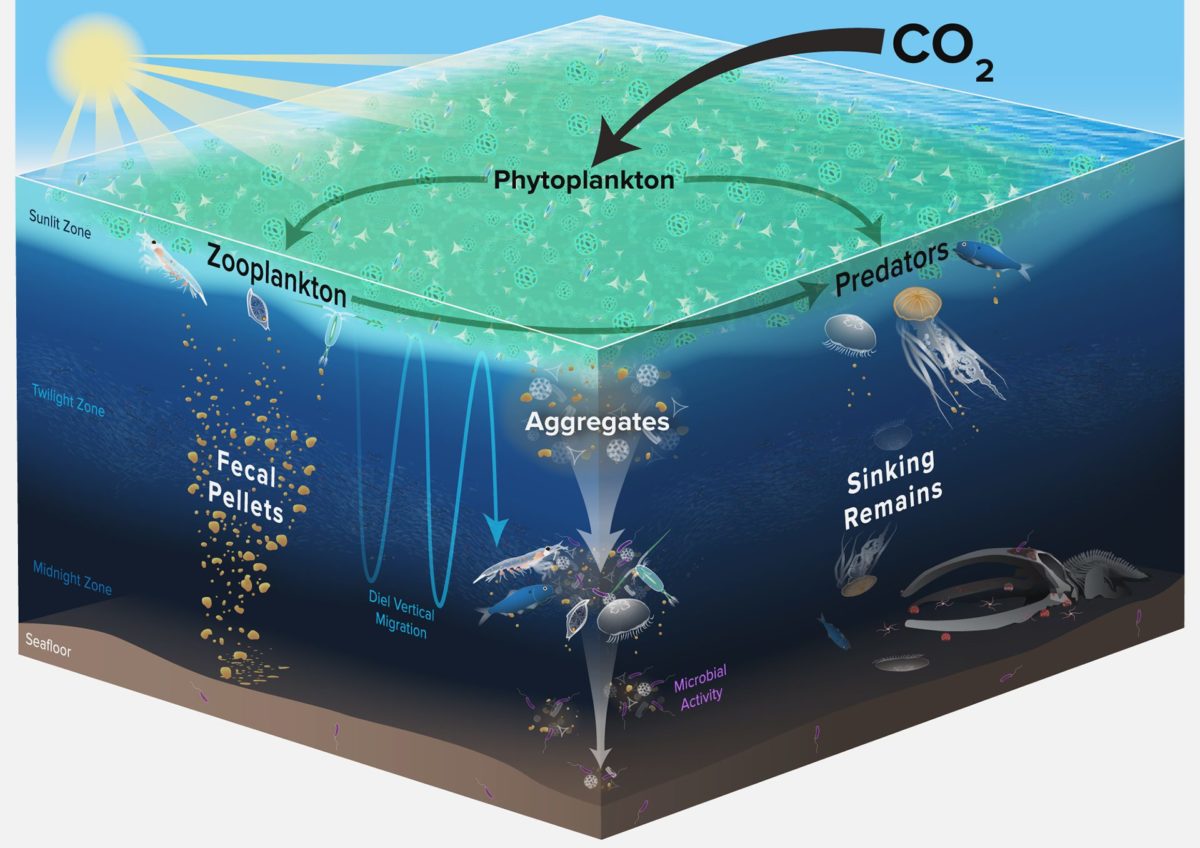Ocean food web processes that drive carbon cycle
The figure above illustrates the ocean food web processes that drive the transformation and partitioning of carbon among various reservoirs. Dissolved inorganic carbon enters the ocean as CO2 which is subsequently converted into particulate and dissolved organic carbon by phytoplankton in the sunlit layer known as the Epipelagic Zone. Organic carbon becomes a source of food for zooplankton (small animals and immature stages of larger animals) In turn, the zooplankton respire CO2 back into the water. A fraction of phytoplankton carbon is exported from the surface ocean, either as sinking fecal pellets or as aggregates (gravitational pump) Dissolved organic carbon is mixed into the ocean twilight zone by moving water masses (mixing pump) Zooplankton also contribute to carbon export through their diurnal (and seasonal) migrations (migrant pump) from the surface layer into the depths of the ocean twilight zone. (Illustration by Natalie Renier, © Woods Hole Oceanographic Institution)
Image and Visual Licensing
WHOI copyright digital assets (stills and video) contained on this website can be licensed for non-commercial use upon request and approval. Please contact WHOI Digital Assets at images@whoi.edu or (508) 289-2647.

